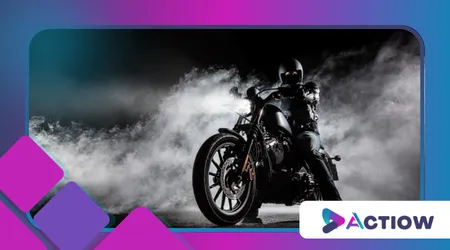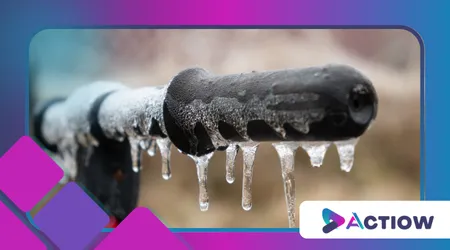Why Some Motorcycles Perform Better in Cold Weather
Anúncios
Motorcycles perform better in cold weather: Motorcycles are more than just vehicles; they’re a lifestyle, a passion, and a testament to engineering precision.
Riders often notice that their bikes seem to come alive in crisp, chilly conditions, delivering sharper throttle responses and a more exhilarating ride.
But why do some motorcycles perform better in cold weather?
Anúncios
This question isn’t just about rider perception it’s rooted in science, engineering, and the interplay of environmental factors.
Let’s explore the reasons behind this phenomenon, diving into engine dynamics, fuel efficiency, tire performance, and more, while weaving in practical examples, data, and a compelling analogy to unpack this intriguing topic.
The Science of Cold Air and Engine Performance

Cold air is denser than warm air, packing more oxygen molecules into the same volume. For internal combustion engines, this is a game-changer.
Motorcycles rely on a precise air-fuel mixture to ignite and produce power.
++ Why Cuban Cars Still Look Like It’s 1950
In colder conditions, the denser air allows for a richer oxygen supply, enabling more efficient combustion.
Consequently, engines can generate more power without increasing fuel consumption, giving riders that unmistakable surge of acceleration on frosty mornings.
Moreover, cold weather reduces the engine’s operating temperature, which can prevent overheating during high-performance riding.
For instance, consider a rider like Alex, who takes his Yamaha R6 out for a spin on a crisp 40°F morning.
He notices the bike feels more responsive, with smoother power delivery as he twists the throttle.
This isn’t just a placebo effect Alex’s engine is capitalizing on the denser air to burn fuel more effectively, translating into sharper performance.
However, this advantage comes with a caveat: riders must ensure their bikes are properly warmed up to avoid cold-start issues, which we’ll explore later.
To put this into perspective, a study by the Society of Automotive Engineers (SAE) found that for every 10°C drop in ambient temperature, engine power output can increase by approximately 1-2% due to improved air density.
This statistic underscores why motorcycles perform better in cold weather, particularly for air-cooled or liquid-cooled engines designed to thrive in lower temperatures.
Riders in colder climates, therefore, often experience a noticeable boost in performance without any modifications to their bikes.
| Factor | Impact in Cold Weather | Benefit to Rider |
|---|---|---|
| Air Density | Higher oxygen content improves combustion efficiency | Increased power output and throttle response |
| Engine Temperature | Lower ambient temps reduce risk of overheating | Consistent performance during long rides |
| Fuel Mixture | Denser air allows for optimal air-fuel ratio | Better fuel efficiency and smoother power delivery |
Fuel Efficiency and Cold Weather Dynamics

Beyond raw power, fuel efficiency is another area where motorcycles can shine in colder conditions.
The denser air allows for a more complete combustion process, meaning less fuel is wasted during each cycle.
As a result, riders may notice their bikes stretching each gallon a bit further during winter rides.
++ Cars with the Best Performance in 2025: Power and Efficiency
This efficiency is particularly pronounced in carbureted motorcycles, where the cold air naturally adjusts the air-fuel mixture without the need for electronic intervention.
For example, picture Sarah, a commuter who rides her Honda CB500F through a chilly New England winter.
On a 35°F day, she observes that her fuel gauge drops more slowly than during summer rides, allowing her to cover an extra 10-15 miles per tank.
This isn’t magic it’s the result of the engine burning fuel more efficiently due to the oxygen-rich air.
Modern fuel-injected bikes, equipped with sensors that adjust the mixture in real-time, further optimize this process, ensuring consistent performance even as temperatures drop.
However, cold weather isn’t a universal boon for fuel economy.
Riders must account for factors like increased idling during warm-up periods, which can offset some of these gains.
Additionally, using winter-grade fuels, which are formulated to vaporize better in low temperatures, can enhance efficiency.
Why wouldn’t you want to take advantage of these conditions to make your rides both thrilling and economical?
By understanding how cold weather impacts fuel dynamics, riders can plan their trips to maximize these benefits.
| Fuel Efficiency Factor | Cold Weather Effect | Rider Consideration |
|---|---|---|
| Combustion Efficiency | Denser air improves burn rate | Less fuel wasted, better mileage |
| Winter-Grade Fuel | Better vaporization in cold conditions | Enhanced performance in sub-freezing temps |
| Warm-Up Period | Increased idling may reduce efficiency | Allow proper warm-up to avoid engine strain |
Tire Performance and Grip in Cold Conditions

Tire performance is a critical factor in how motorcycles handle, and cold weather introduces unique dynamics.
While one might assume that chilly temperatures reduce tire grip, certain motorcycles especially those with tires designed for cooler climates can actually perform better.
Cold weather keeps tire temperatures lower, preventing overheating during aggressive riding, which can lead to better traction and longevity.
++ The Car That Was Powered by Nuclear Energy (Yes, Really)
Additionally, modern tire compounds are engineered to remain pliable in low temperatures, ensuring consistent grip.
Consider the case of a sport-touring rider navigating a winding mountain road on a 45°F day.
The rider’s Michelin Pilot Road tires, designed for versatility, maintain excellent grip because the cooler temperatures prevent the rubber from becoming too soft.
This allows for confident cornering without the risk of tire degradation.
In contrast, summer tires might harden in the cold, reducing traction, which highlights the importance of choosing the right tire for the season.
An analogy helps clarify this point: think of a motorcycle tire as a chef’s knife.
In warm conditions, the tire’s rubber is like a knife that’s been overheated, becoming too soft and losing its edge.
In cold weather, the tire stays “sharp,” retaining its grip and precision, provided it’s the right compound.
Riders must select tires suited for colder climates to capitalize on this advantage, as improper tire choice can negate the benefits of cold-weather performance.
| Tire Factor | Cold Weather Impact | Rider Benefit |
|---|---|---|
| Tire Temperature | Stays lower, preventing overheating | Improved traction and tire longevity |
| Tire Compound | Modern compounds stay pliable in cold | Consistent grip for safer cornering |
| Tire Pressure | Cold air reduces pressure, requiring adjustment | Regular checks ensure optimal performance |
Maintenance Considerations for Cold Weather Riding

While cold weather can enhance motorcycle performance, it also demands careful maintenance to sustain those benefits.
Low temperatures can thicken engine oil, making it harder for the engine to turn over during startup.
Riders must use oils with lower viscosity ratings, such as 10W-30, to ensure smooth operation.
Additionally, battery performance can suffer in the cold, as chemical reactions slow down, reducing cranking power.
Regularly checking battery health is crucial to avoid being stranded on a frosty morning.
Another key consideration is the cooling system.
Liquid-cooled motorcycles benefit from antifreeze formulated for low temperatures, preventing freezing and ensuring proper heat dissipation.
For instance, a rider who neglects this might find their radiator fluid frozen solid, damaging the system.
By contrast, air-cooled bikes, like many classic Harley-Davidsons, thrive in cold weather because the lower ambient temperatures naturally keep the engine cool, enhancing performance without additional strain.
Lastly, cold weather can exacerbate wear on components like chains and brakes.
Riders should lubricate chains more frequently to prevent rust and ensure smooth operation.
By proactively addressing these maintenance needs, riders can fully harness the performance advantages of cold weather.
Neglecting these steps, however, could turn a potentially thrilling ride into a frustrating ordeal.
| Maintenance Area | Cold Weather Challenge | Recommended Action |
|---|---|---|
| Engine Oil | Thickens in cold, increasing engine strain | Use low-viscosity oil (e.g., 10W-30) |
| Battery Performance | Reduced cranking power in low temperatures | Check and charge battery regularly |
| Chain and Brakes | Increased wear and rust risk | Lubricate chain, inspect brake pads |
Addressing Common Myths and Misconceptions
A common myth is that all motorcycles perform better in cold weather.
In reality, only certain bikes those with air-cooled engines, optimized fuel systems, or cold-weather tires see significant gains.
Fuel-injected motorcycles, for example, adapt better to temperature changes than older carbureted models, which may struggle with cold starts.
Riders must understand their bike’s specific characteristics to leverage cold-weather advantages effectively.
Another misconception is that cold weather universally improves performance without drawbacks.
While power output and fuel efficiency may improve, riders face challenges like reduced tire pressure, slower warm-up times, and potential battery issues.
These factors require proactive management to ensure the bike performs at its peak. Ignoring them can lead to sluggish performance or even mechanical failure.
Finally, some riders believe that cold weather eliminates the need for cooling system maintenance.
On the contrary, liquid-cooled bikes require careful attention to antifreeze levels, while air-cooled bikes benefit from the natural cooling effect of cold air.
By debunking these myths, riders can make informed decisions to optimize their motorcycle’s performance in chilly conditions.
| Myth | Reality | Rider Takeaway |
|---|---|---|
| All bikes perform better | Only specific bikes benefit significantly | Know your bike’s engine and tire specs |
| No drawbacks in cold | Challenges like battery and tire issues exist | Perform regular maintenance checks |
| Cooling system irrelevant | Antifreeze and air-cooling still critical | Monitor coolant and leverage air-cooling benefits |
Motorcycles perform better in cold weather: Frequently Asked Questions
| Question | Answer |
|---|---|
| Do all motorcycles perform better in cold weather? | No, only bikes with air-cooled engines or cold-optimized systems see notable gains. |
| How does cold weather affect tire performance? | Cold weather keeps tires cooler, improving grip if the compound is suitable. |
| What maintenance is needed for cold weather? | Use low-viscosity oil, check battery health, and lubricate chains regularly. |
| Can cold weather damage my motorcycle? | Yes, if maintenance is neglected (e.g., frozen coolant or thickened oil). |
| Does fuel type matter in cold weather? | Winter-grade fuels vaporize better, enhancing efficiency in low temperatures. |
Conclusion: Motorcycles perform better in cold weather
Motorcycles perform better in cold weather due to a fascinating interplay of physics, engineering, and environmental factors.
From denser air boosting combustion to tires maintaining optimal grip, the advantages are clear for riders who understand and prepare for these conditions.
However, these benefits come with responsibilities proper maintenance, tire selection, and fuel considerations are critical to unlocking peak performance.
By embracing the science and debunking myths, riders can transform chilly rides into exhilarating experiences.
So, the next time you fire up your bike on a crisp morning, ask yourself: are you ready to harness the power of the cold?
